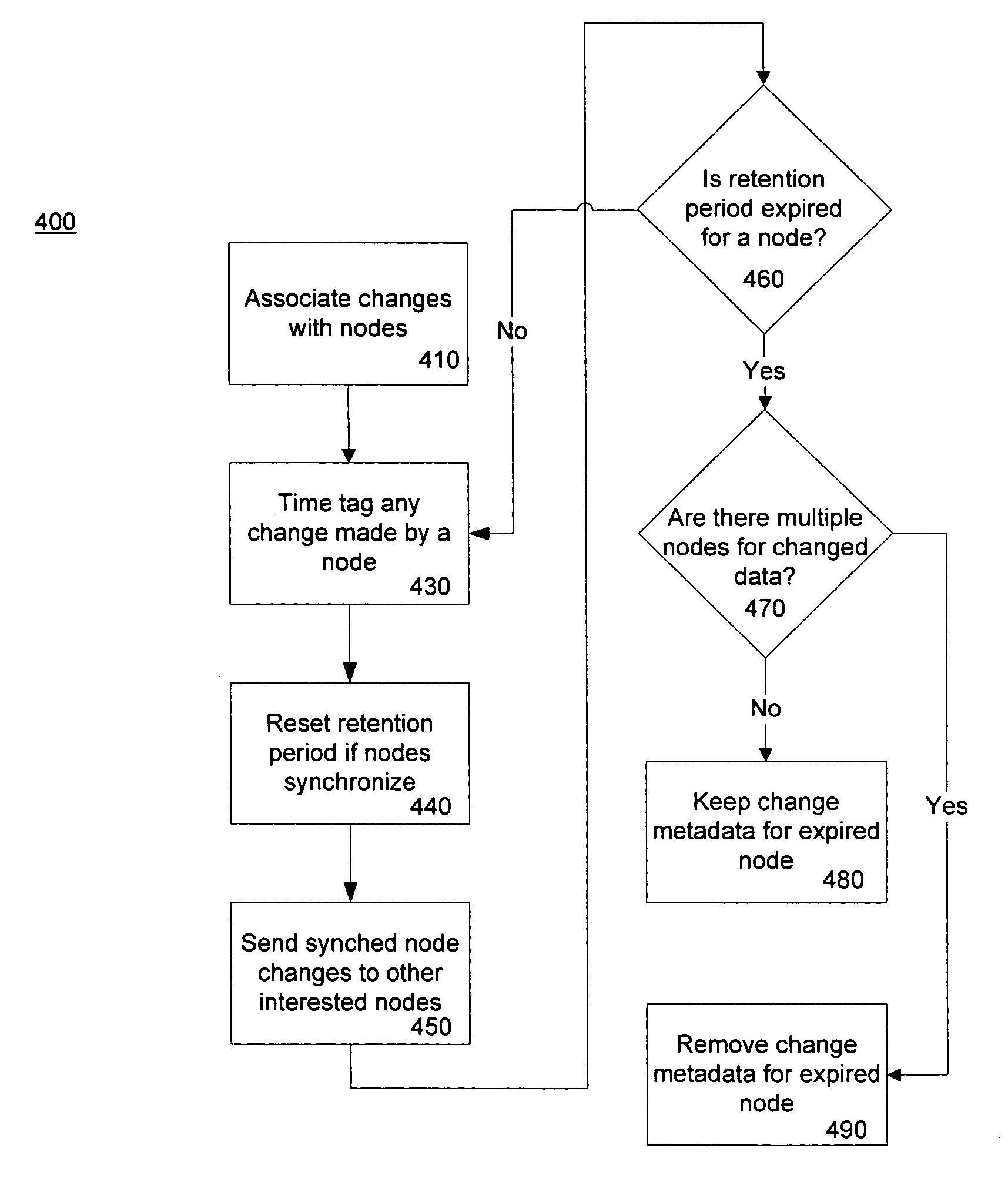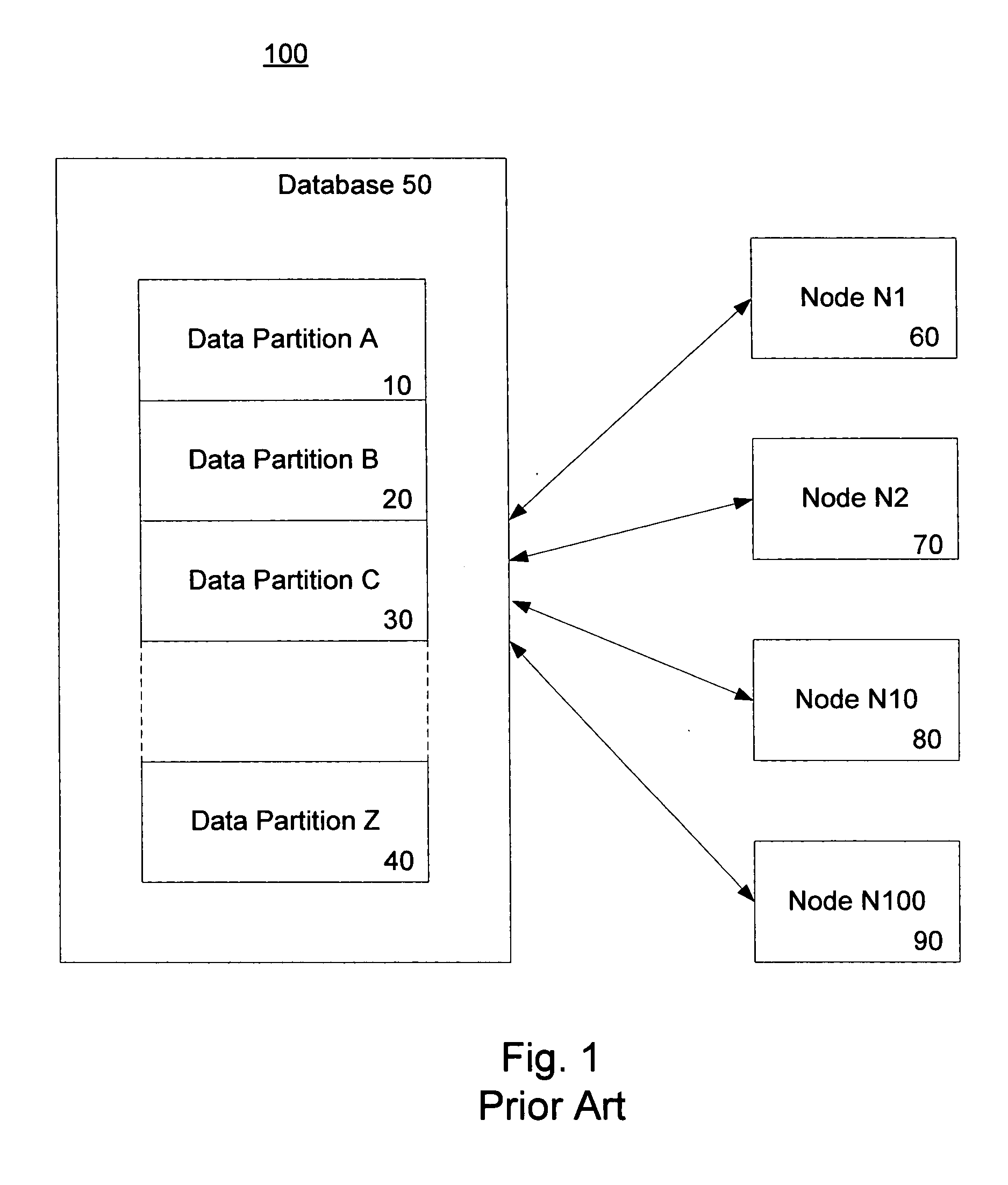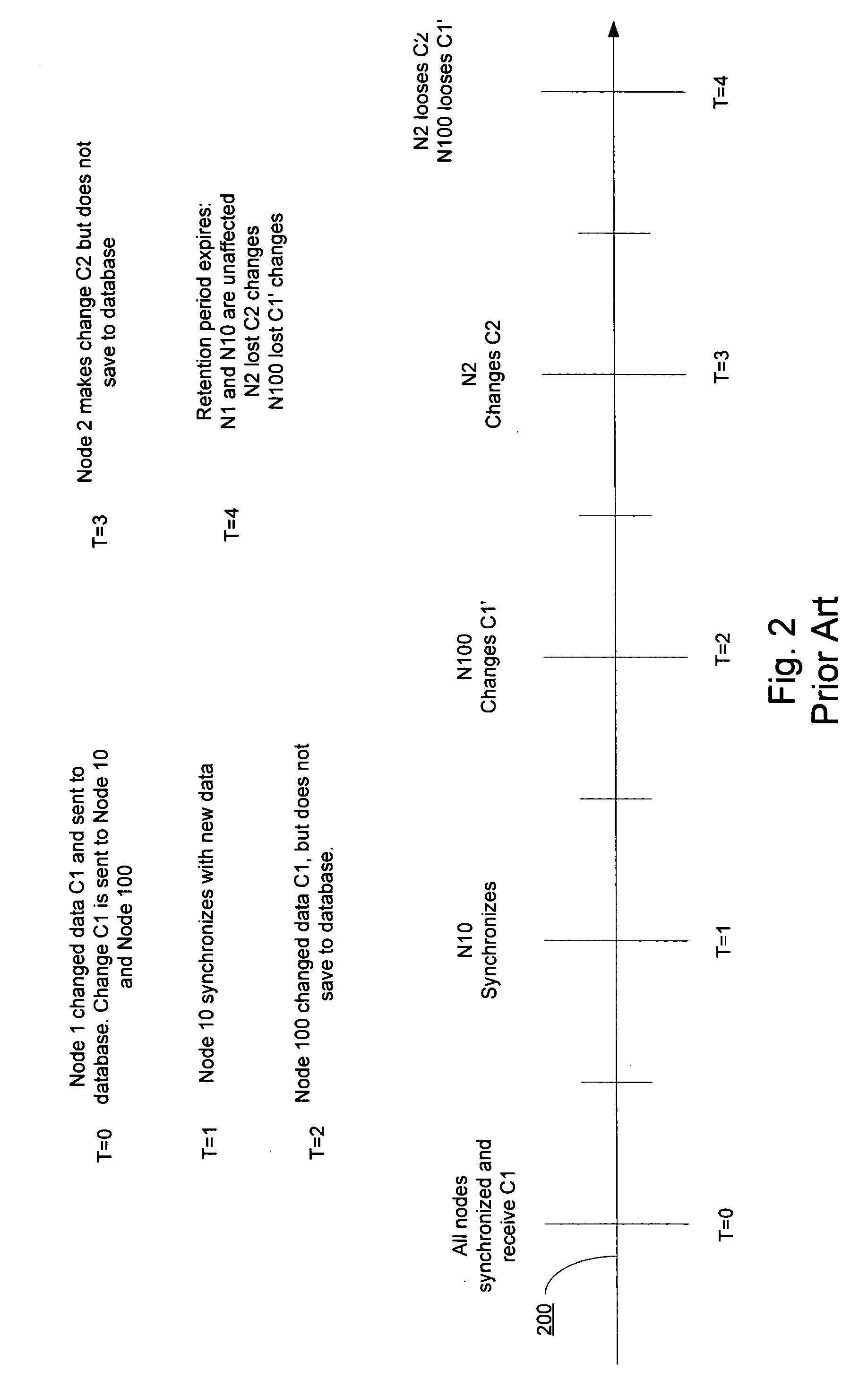Method and system for partition level cleanup of replication conflict metadata
a technology of replication conflict and metadata, applied in the field of database management, can solve problems such as conflict, system stability, scalability, and performance adversely affected, and achieve the effects of reducing system stability, scalability, and scalability
- Summary
- Abstract
- Description
- Claims
- Application Information
AI Technical Summary
Benefits of technology
Problems solved by technology
Method used
Image
Examples
Embodiment Construction
Exemplary Embodiments of the Invention
[0017]FIG. 1 is a depiction of a prior art replication system 100, that includes a database 50 and multiple nodes 60, 70, 80, and 90. In this system the database 50 may be subsetted into multiple partitions 10, 20, 30, 40. Each partition may be replicated by the system 100 and sent to any node that requests it. For example, Node N1 (60) may request partition A 10 along with partition Z 40. Node N2 (70) may request only partition B 20. Node N10 (80) may request partition C 30. Node N100 (90) may request partition A 10 and partition C 30.
[0018] Table 1 indicates a mapping of data partitions to nodes and indicates that nodes N1, N10, and N100 are using data partition A. Any change to an element of data partition A that is made by node A would be of interest to nodes N10 and N100 because those nodes are also subscribing to the information in data partition A. Consequently, any change made to partition A is properly propagated to the other nodes su...
PUM
 Login to View More
Login to View More Abstract
Description
Claims
Application Information
 Login to View More
Login to View More - R&D Engineer
- R&D Manager
- IP Professional
- Industry Leading Data Capabilities
- Powerful AI technology
- Patent DNA Extraction
Browse by: Latest US Patents, China's latest patents, Technical Efficacy Thesaurus, Application Domain, Technology Topic, Popular Technical Reports.
© 2024 PatSnap. All rights reserved.Legal|Privacy policy|Modern Slavery Act Transparency Statement|Sitemap|About US| Contact US: help@patsnap.com










